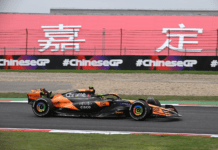South Korea is the new addition in the Formula E Championship as FIA released a provisional expanded 14-race calendar.
The current season has 13 races in all but the 2019/20 Formula E season is provisionally to hold 14 races with two double-headers in place in Saudi Arabia and London – both of which are subjected to Government approval for a double-header.
As expected, the season will kick-off in Ad Diriyah in Saudi Arabia but it moves into a November slot on the weekend of 22-23 for the double-header, just a week before 2019 F1’s season-finale at Yas Marina Circuit in Abu Dhabi.
The next race is scheduled for December 14 date but the destination is yet to be confirmed. The slot was occupied by Morocco in the last few seasons but it looks like the agreement hasn’t reached between the organisers of the ePrix and the championship.
The 2019 leg will be over then with three races with the first 2020 event to be held in Chile on January 18 with Mexico keeping its place on the calendar to be Round 5 on February 15, which will complete the South American leg with the two races.
The circus will move to Asia with two races in China, the first in Hong Kong on March 1 with the second one on March 21, the venue for which isn’t confirmed. Sanya hosted this season’s ePrix but it seems like the agreement hasn’t been reached.
Instead of a full-fledged European tour, Formula E will race in Rome and Paris on April 4 and April 18 respectively, but instead of moving to Berlin, it will go back to Asia with the latest addition on the calendar i.e Seoul in South Korea on May 3.
From there, it will move to Berlin on May 30 and then to New York on June 20 for a single race as opposed to a double, with the season culminating in London with a double-header on July 25-26. Another omission from the calendar is the Switzerland race.
The World Motor Sport Council also confirmed some rule changes, which goes:
- During a race suspension, the timekeeping system will stop, unless otherwise announced by the Race Director, with the aim of completing the full race time
- The fastest driver in each of the four qualifying groups will score one championship point
- Maximum power output of the RESS will increase from 225kW to 235kW in Attack Mode
- Activation of Attack Mode will be forbidden during Full Course Yellow and Safety Car periods
- For each minute spent under Full Course Yellow or Safety Car conditions, 1 kWh will be subtracted from the total available energy measured from the point at which the race was neutralised
- The homologation cycle for the Gen2 car will be extended to include season eight for reasons of cost control and to account for new manufacturers entering in season six. This decision does not exclude the following potential updates:
- Power increase
- Battery performance improvement
- Design evolution
A modification to the Technical Regulations was also approved, reducing the maximum number of MGUs (rotating electromechanical power converters) from two to one.
Our provisional calendar for the 2019/20 season as we return to London and race in Seoul for the first time! #ABBFormulaE pic.twitter.com/oxpRiyEPxB
— ABB Formula E (@FIAFormulaE) June 14, 2019
Cape Town consortium to assess feasibility of staging Formula E race



















